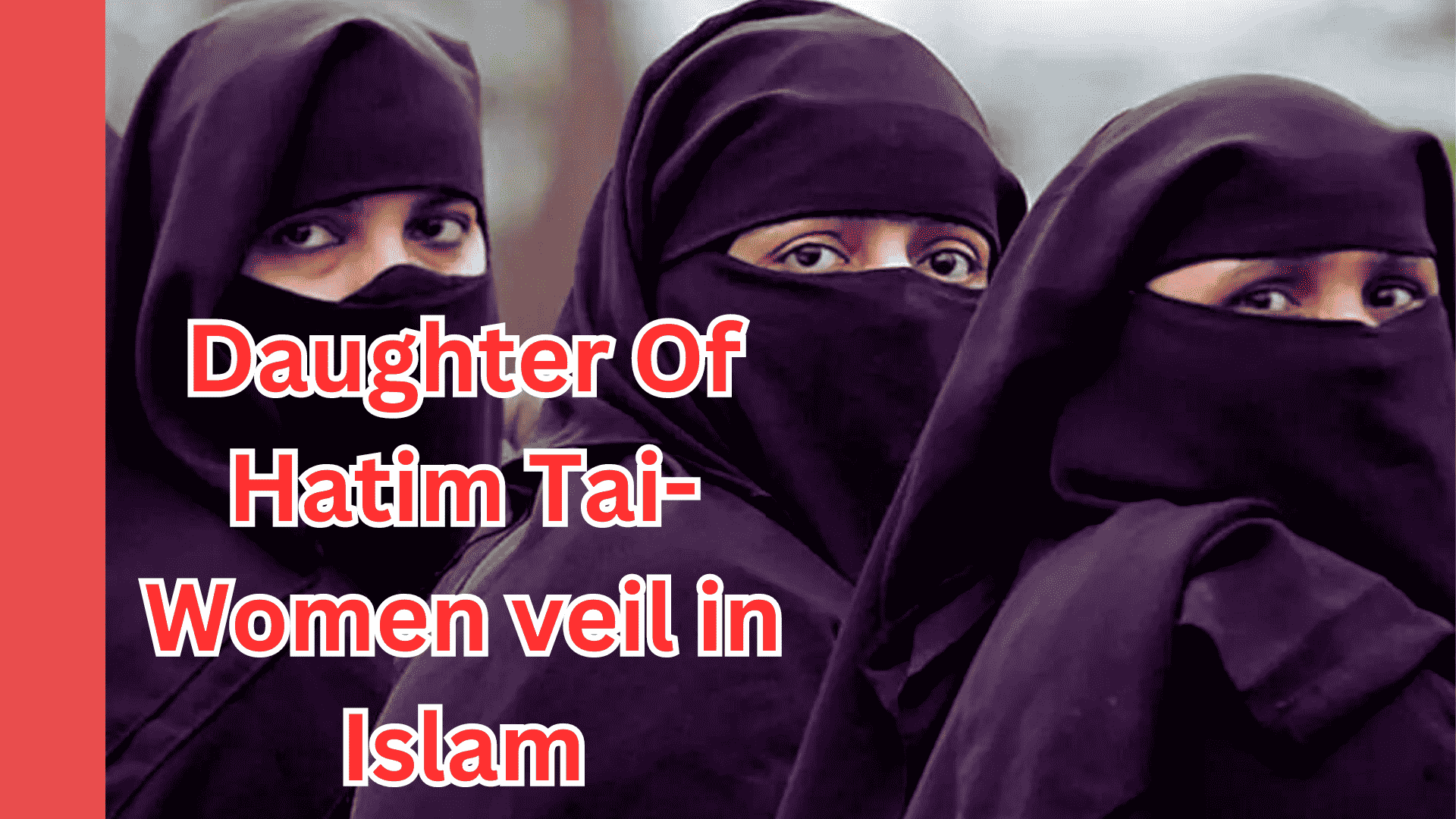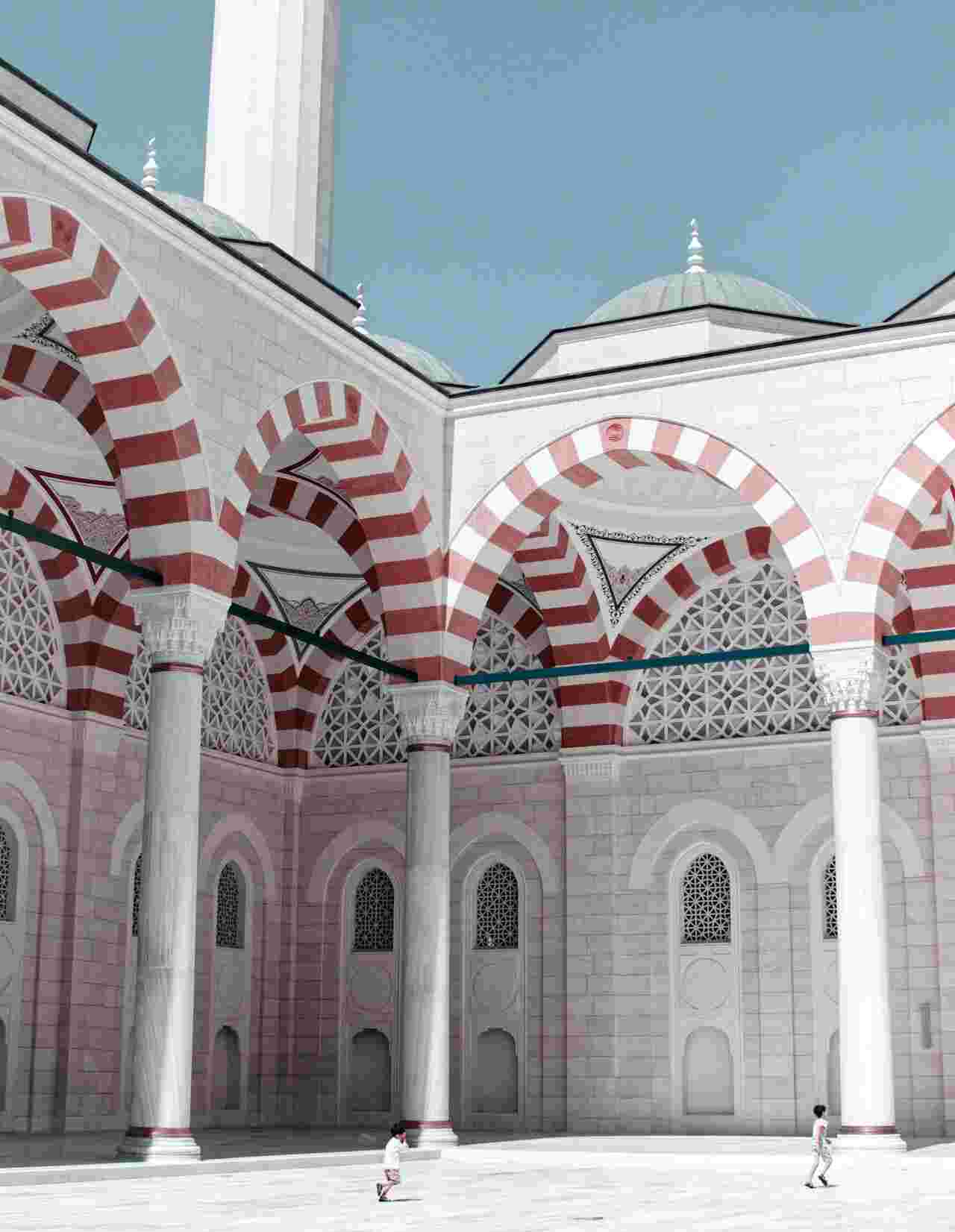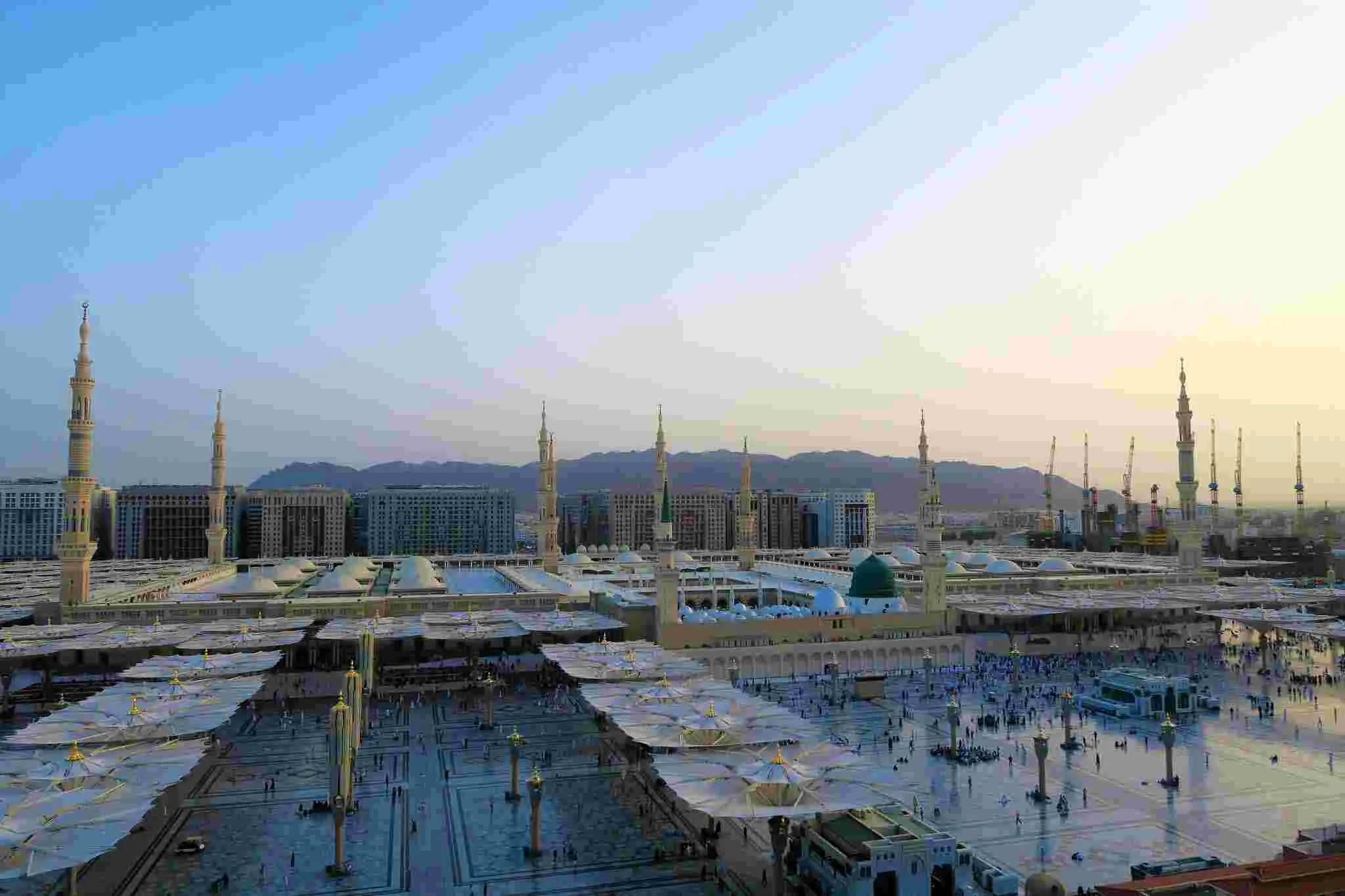Welcome to (International Stories) in this story we will discuss the Daughter Of Hatim Tai- Women veil in Islam. How to live a pious life in Islam? Who Was the Daughter of Hatim Tai? Completely read this story the Daughter Of Hatim Tai – The order of women veil in Islam And How to succeed in life and career?

Daughter Of Hatim Tai- Women veil in Islam
Who Was the Daughter of Hatim Tai?
Hatim Tai’s daughter came to the Prophet’s house in captivity and covered her head. A few hairs on her head or a hair were visible. The Prophet Muhammad (peace and blessings of Allah be upon him) said to Hazrat Umar (RA), “Put a dupatta on the head of Hatim Tai’s daughter.” Hazrat Umar (RA) said that the Messenger of Allah is the daughter of a disbeliever.
The Prophet Muhammad (peace and blessings of Allah be upon him) wept and said to Umar, ‘she is a daughter, whether she is a daughter of kaafir or a Muslim. The Prophet Muhammad (peace and blessings of Allah be upon him) got up from his seat and picked up the chador and placed it on the girl’s head. The Prophet Muhammad (peace and blessings of Allah be upon him) said, “My daughter, my companions have imprisoned you. If you want to stay here, stay. If you want to go back, you can go. “The girl said, “I want to go back”.
Sacrifice in the name of The Prophet Muhammad (peace and blessings of Allah be upon him). And My parents also sacrificed for your decisions. You imposed the duty of the few Sahaabah. Ati ibn Hatim, the son of Hatim Tai, came out from inside. When he saw his sister with non-mahram companions, he became angry. The first question he asked his sister was, “How is the Prophet of the Muslims?”
Who Was the Son of Hatim Tai?
The sister ran forward and put her hand on her brother’s mouth and said, “Brother, don’t utter the wrong word. Even my father cannot protect my honor which the servants of Muhammad Arabi have done.” He asked, “What is the role of these companions?” It was said that it was time for prayers. They used to offer prayers. I did not see their faces. They did not see mine.
The anger subsided and he said if The Prophet Muhammad (peace and blessings of Allah be upon him) of the Muslims is so good then why you did not become a Muslim? She said, “My heart wanted me to become a Muslim. Then I thought, ‘My Brother, don’t die in hell. I have come to pick you up.’ I join hands.
Tell me, My Prophet Muhammad (peace and blessings of Allah be upon him) respects the daughter of a disbeliever. You are the children of Adam. You are spending time with a Muslim sister. Tell me, what will you answer if Hussain’s grandfather asks you on the day of judgment?
what is an honor of women in Islam?
You can’t see that Kamliwala infidel’s daughter’s head covering falls off. You play with the honor of your Muslim sisters. The companions of The Prophet Muhammad (peace and blessings of Allah be upon him) take a non-mahram home after two days and two nights. You are always looking to see your Muslim non-mahram sister. A sister or daughter on the road to school or college or for any other purpose. If she is going to work under some compulsion, you will look at her with a dirty and filthy look.
What will you say when you face The Prophet Muhammad (peace and blessings of Allah be upon him) on the Day of Resurrection?
The Prophet Muhammad (peace and blessings of Allah be upon him) asks the daughter of a disbeliever, “daughter, if you want to go, you can go. If you want to stay, you can stay here, then I am your father. You are a follower of this Prophet and you talk to your Muslim sister all day long about illicit relations when The Prophet Muhammad (peace and blessings of Allah be upon him) will ask, “I was come after giving you this lesson. What did you do? What will you answer?”
How to live a pious life in Islam?
I will also say to these sisters, my sister, lead a pious life and respect your parents, respect them, you have only one relationship with a non-mahram man, it is only a marriage relationship, otherwise, all those who are contractors of your honor. All are wrong except Muharram
My brothers and sisters, ask forgiveness from Allah, He is the Most Merciful, the Most Forgiving. Live a pure life. That is the truth.
Conclusion:
This story was written only for just Motivation, Sadqa-E-Jarea, and Dawah’s work. Not our purpose to waste your precious time. Your time has more important to us. Thanks for taking the time for reading this. Reading what is an honor of women in Islam? And How to live a pious life in Islam? The order of women’s veil in Islam. Good luck and have a good day.
I will also say to these sisters, my sister, lead a pious life and respect your parents, respect them, you have only one relationship with a non-mahram man, it is only a marriage relationship, otherwise, all those who are contractors of your honor. All are wrong except Muharram.
My brothers and sisters, ask forgiveness from Allah, He is the Most Merciful, the Most Forgiving. Live a pure life. That is the truth.
FAQ:
What does Islam say about women’s roles?
- In traditional Islam, the need for women to provide for their partners goes beyond their responsibilities to bear children and raise them.
- Women cannot opt out of doing domestic duties.
- They should carry out their obligation to stop guys from engaging in unlawful sexual activity.
The order of women’s veil in Islam:
While some legal systems recognize the hijab as an order to cover the entire body, including the face and hands, others recognize it as an order to cover everything that saves the face and hands. These rules can be found in hadith and fiqh writings that were created following the revelation of the Qur’an.
What are the rules for wearing a hijab?
A woman is required to cover her entire body, including her face and hands, yet she is also allowed to leave her hands and face exposed, according to hadith. Sharia law also has an entirely different clothing code for concubines than it does for free women.
The beauty of the Hijab in Islam:
The hijab is a sign of modesty and security as well as having additional religious significance for any woman who chooses to wear it. Wearing a hijab may have various meanings for different women, and for Taha, it brings back memories.
What does it mean for a woman to veil?
The practice of veiling for women can have various cultural, religious, and social meanings, and its significance can vary widely depending on the context and the specific community or individual involved. Here are some of the key aspects and meanings associated with veiling for women:
Religious Significance:
- In Islam: The hijab, which is a general term for modest clothing and head covering, is a religious requirement for Muslim women. It is intended to promote modesty and privacy and is often seen as a symbol of faith and submission to God’s command. Different Muslim communities and individuals may interpret and practice hijab in various ways, leading to variations in style and coverage.
- In other religions: Veiling can also be found in other religious traditions. For example, in Orthodox Christianity, women may wear head coverings, and in some Jewish traditions, married women may wear headscarves or wigs as a sign of modesty.
Cultural and Social Significance:
- Veiling can be a cultural practice that varies from one region or community to another. In some cultures, veiling is a sign of respect, purity, or tradition. For example, in certain parts of South Asia, women may wear veils or head coverings as part of their traditional dress.
- Veiling can serve as a marker of identity or a symbol of belonging to a particular group or community.
- In some societies, veiling can be a means of protection from the elements or privacy in public spaces.
Personal Choice:
- For some women, veiling is a matter of personal choice and empowerment. They may choose to wear a veil as a form of self-expression, a means of asserting their identity, or to challenge societal norms.
- In Western societies, some women may adopt veiling as a feminist or political statement, asserting their right to dress as they choose.
Modesty and Decency:
- In many contexts, veiling is associated with notions of modesty and decency, reflecting the idea that covering certain parts of the body is a way to preserve one’s dignity and protect against objectification or unwanted attention.
It’s important to note that the meaning and significance of veiling can vary widely from one individual to another. Some women may wear veils with a strong sense of religious or cultural obligation, while others may do so as a personal choice or fashion statement. Veiling practices are complex and multifaceted, and they are influenced by a wide range of factors, including religious beliefs, cultural norms, personal preferences, and societal expectations.
What is a Catholic veil called?
In the Catholic tradition, the veil worn by women is often called a “mantilla.” A mantilla is a lace or silk veil that is typically worn by women as a sign of reverence and modesty when attending Mass or other religious ceremonies. It is often draped over the head and shoulders, and it can vary in size and style. The practice of wearing a mantilla is most common in traditional or conservative Catholic communities and is not obligatory but considered a sign of respect and devotion.

Why should women wear veil?
The question of whether women should wear a veil is a complex and often controversial one. The practice of veiling is deeply rooted in cultural, religious, and societal norms, and the reasons for wearing a veil can vary significantly depending on the context. Here are some of the common reasons:
Religious Beliefs: In many religions, women are encouraged or required to wear a veil as an expression of their faith and modesty. For example, in Islam, some women choose to wear the hijab (headscarf) as a sign of their devotion to God and modesty. In Christianity, some women may wear veils during religious ceremonies as a symbol of reverence.
Cultural Traditions: In some cultures, veiling is a deeply ingrained tradition that has been passed down through generations. The veil may be a symbol of a woman’s purity, modesty, or marital status, and it is often worn as a matter of tradition.
Personal Choice: Many women choose to wear a veil as a matter of personal choice and empowerment. They may see it as a form of self-expression, a way to connect with their cultural or religious heritage, or a means of asserting their individuality.
Modesty: For some, wearing a veil is a way to express modesty, covering the body and hair to avoid drawing unnecessary attention to their appearance. Modesty can be a personal or religious choice.
Protection from the Elements: In some regions with extreme weather conditions, such as deserts or very sunny areas, veils can offer protection from the sun, wind, and sand.
It’s important to emphasize that the choice to wear a veil should be a personal one, and it should not be imposed on anyone. Women should have the freedom to make their own decisions about whether or not to wear a veil based on their beliefs, values, and cultural or religious backgrounds.
Additionally, societal norms and expectations regarding veiling can vary widely, and what is appropriate or expected in one culture or religious community may not be the same in another.
Ultimately, whether women should wear a veil is a matter of personal choice and cultural or religious significance, and it’s important to respect and understand the reasons behind these choices within the context of individual beliefs and backgrounds.
Why do Catholic women veil?
Veiling among Catholic women, known as the practice of wearing a mantilla or chapel veil, has its roots in the tradition of modesty and reverence within the Catholic Church. While it’s not mandatory for Catholic women to wear veils, some choose to do so for various reasons. Here are some of the primary reasons:
Tradition: The practice of women covering their heads in church has a long history in Christianity and is rooted in passages from the Bible, particularly 1 Corinthians 11:2-16. This tradition was widely followed until the 1960s when it was largely abandoned after the Second Vatican Council. Some women choose to veil as a way of connecting with this historical tradition.
Modesty: Wearing a veil is seen by some as a symbol of humility and modesty, emphasizing the sacredness of the Mass and the presence of Christ in the Eucharist. It is a way for women to show respect and reverence in the presence of God.
Personal Devotion: Some women find that wearing a veil helps them focus on their spiritual life during Mass and other religious ceremonies. It can serve as a reminder of the sacredness of the space and the importance of the moment.
Cultural and Regional Variations: Veiling practices can vary widely among Catholic women depending on their cultural and regional backgrounds. In some cultures, veiling is a common tradition, while in others, it may be less prevalent.
Personal Choice: Ultimately, whether or not to wear a veil is a matter of personal choice. While some women feel a deep connection to the tradition and choose to veil, others do not. The Catholic Church does not require women to wear veils, and it is not considered a matter of doctrine or dogma.
It’s important to note that the practice of veiling can vary from one parish or community to another, and the significance attached to it may differ among individuals. Some women may choose to veil regularly, while others may only do so during certain liturgical seasons or for specific occasions.
The practice of veiling is a matter of personal piety and devotion for many Catholic women, and it should be understood in that context.

Hazrat Abbas bin Abdul Muttalib and Hazrat Umar =>
5 Qualities to become a good teacher =>
National Museum of Mathematics Interview =>

